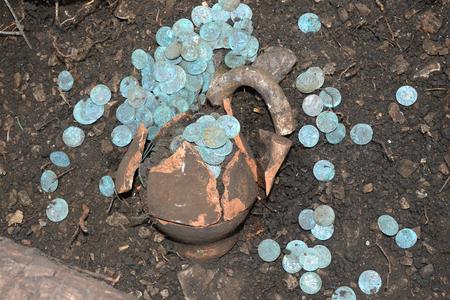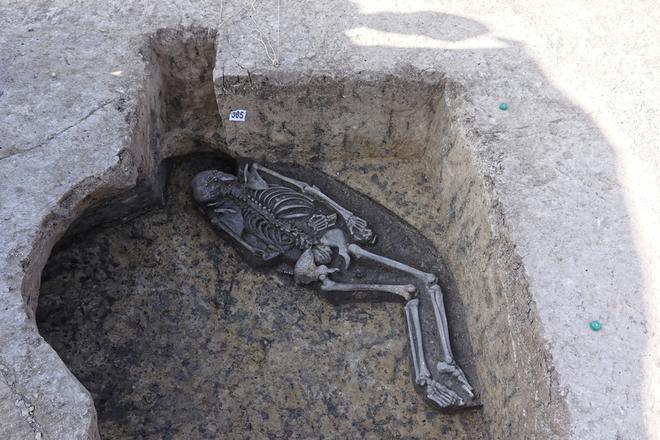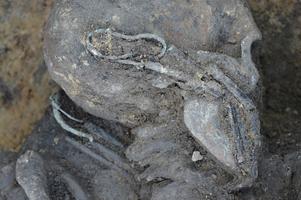Archaeologists found an interesting discovery when researching the area of the transport infrastructure for Jaguar Land Rover and accompanying industrial park in Nitra. They found a human skeleton from the Bronze Age that was probably a shaman. He was not buried in a standard grave but placed in hole serving a food storage.
“When the hole was not used anymore, people backfilled it with soil and this person was placed or thrown inside later. We don’t know whether he was thrown in or placed in, because the human was lying on his stomach,” said Klaudia Daňová, a scientific secretary from the Archaeological Institute in Nitra, as cited by the SITA newswire.
“Bronze decorations were placed near his ears. They were connected by little ear bones,” added Daňová for SITA. Archaeologists suggest that those are poultry bone but an analysis will be done to make sure.
“The decorations are unusual, we don’t have anything analogous to them yet,” stressed Daňová as quoted by SITA, adding that the placement of the body on his stomach is also unusual.
Scientists hypothesize that the body came from the older Bronze Age, however, a specific time frame will be given after radiocarbon analysis of the bones. Anthropological analysis will also determine gender, reveal diseases and maybe the cause of death.
“A necklace made of bones was the sign of a shaman,” said the head of the Archaeological Institute in Nitra Matej Ruttkay, as quoted by SITA. He added that shamans used to be very important persons in past times.
“They solved problems when the weather was dry, when someone was ill. The question is, if they were really solving problems or the society just believed it,” said Ruttkay, as cited by SITA.

Archaeologists researched more than 20 kilometres of future roads. They focused on four places where they found evidences of settlement from prehistoric times to middle ages. Six graves of children and one adult from the late Stone Age was also interesting. Archaeologists found also the foundations of houses from this era.
Archaeologists discovered at each of the researched areas findings from the early Middle Ages, mainly from the Great Moravia era. They found typical Slavic houses – dugout shelters with a stone oven in the corner.
These are proofs of the large area of Nitra’s agglomeration in the early Middle Ages, according to Ruttkay. The dense net of settlements was bigger than today’s town, which puts Nitra as the most significant Central-European centre of that age.
The research should be done during November. The findings, however, have not affected construction plans.



 (source: Klaudia Daňová)
(source: Klaudia Daňová)

